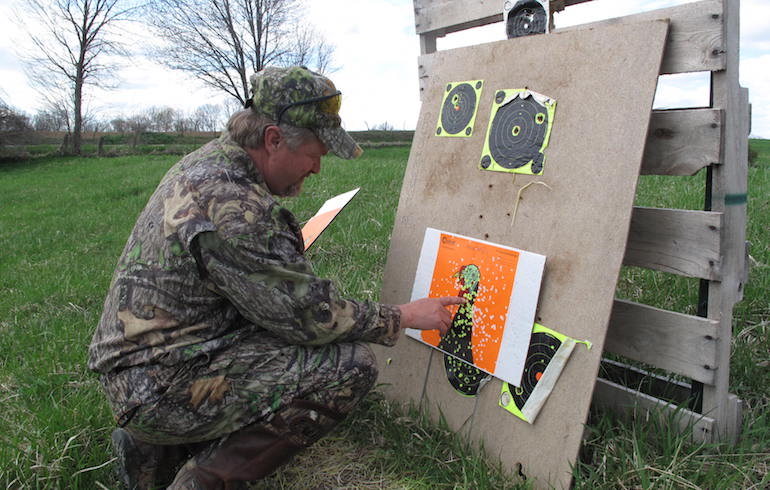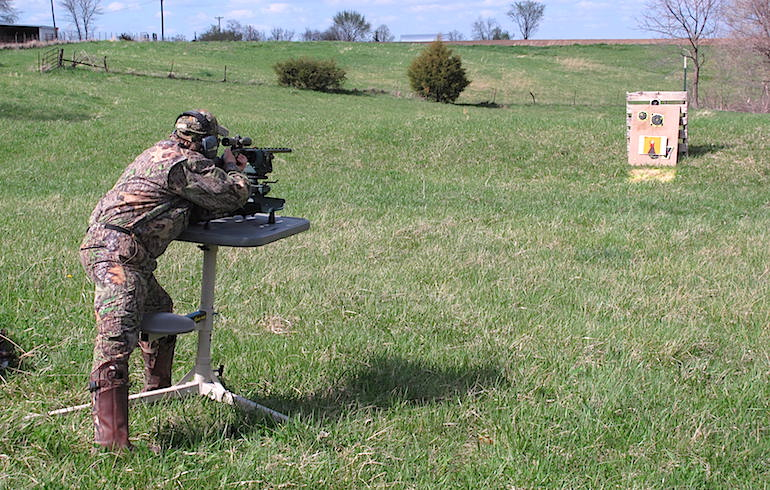How to Pattern a Turkey Load
Here are 5 steps to get the most from sighting in your turkey gun before the season.
Whether you’re still sweating that late season bird with your favorite turkey gun or have taken a shot or two without dropping a bird, chances are, unless you’ve patterned your shotgun, you probably aren’t as dialed in as you think you are. Patterning a turkey load isn’t just for when you have a new gun.

Whether you have dropped in a new choke tube, swapped loads or simply need to hone your skills (and all of us do), properly placing an even pattern over a turkey’s head and neck vitals is something every hunter should practice before and during the season.

- Choose Your Target — While you can pattern your shotgun on any piece of paper, targets that have illustrations of a turkey’s head and neck as well as a circle—preferably 10 inches—centered on the target will be the most helpful. The turkey head provides a solid aiming point, while the circle allows you to best analyze if you have an even pattern over the vital area.
- Take a Rest — To obtain the best results, test your gun/load combo shooting from a bench, which allows a more steady rest. It’s also helpful to use a device such as a Caldwell Lead Sled. Turkey loads pack a punch, and you don’t want to be flinching after your second or third shot.
- First Shots — Wearing eye and ear protection, start with a target set at 30 yards. Load a single shell in the shotgun, settle in, assume a comfortable shooting position and gently squeeze the trigger as you would with a rifle. Be careful not to snatch the trigger as the slight pull can alter your aim downrange enough to completely miss. After the shot, make sure your gun is empty and then examine the target. Ideally, you want a minimum of 100 pellets inside the 10-inch circle at any reasonable range. Typically, a tight after-market turkey choke and quality turkey load will produce far more than that at 30 steps. If your choke-and-load combination doesn’t produce that many hits at that range, try a different load or even a different choke tube if feasible. You need better performance.
- Note the Pattern — Be sure to note the shape and consistency of the pattern, too. You want a round, even pattern with minimal fliers and no holes or bunches of pellets in the main pattern. A lot of fliers could mean your choke constriction is too tight for the shot you’re sending down the barrel. Try smaller shot, like No. 6s, or swap out your choke tube. Winchester’s Long Beard XR features Shot-Lok Technology, which fills the space between pellets to protect shot during in-bore acceleration. This in turn reduces the number of deformed pellets for better patterns; something to remember when staring at all of those options on the ammo shelf at the sporting goods store this spring.
- Go Long…And Short — Once you’ve found a load that is working well from your shotgun, it’s time to determine how far your effective range is, as well as determine how tight it is up close. Surprisingly, more turkeys are probably missed up close than far away because the shot column has little more width than a baseball until it can open up more. One hundred pellets are still your benchmark. Shoot targets at 35, 40, 45 yards…and maybe even on if using Long Beard XR. Once the pellet count falls below 100 in a 10-inch circle at any distance, back off 5 yards and consider that your effective killing distance. Now shoot some patterns at 20 yards and even as close as 10 to understand how well you’re really going to have to aim when that tom sneaks in close.

Winchester Ammunition
A world leader in delivering innovative products, Winchester is The American Legend, a brand built on integrity, hard work, and a deep focus on its loyal customers.



